PETER TEMPELHOFF
Buitenverwachting’s new ‘beyond’ defines its name
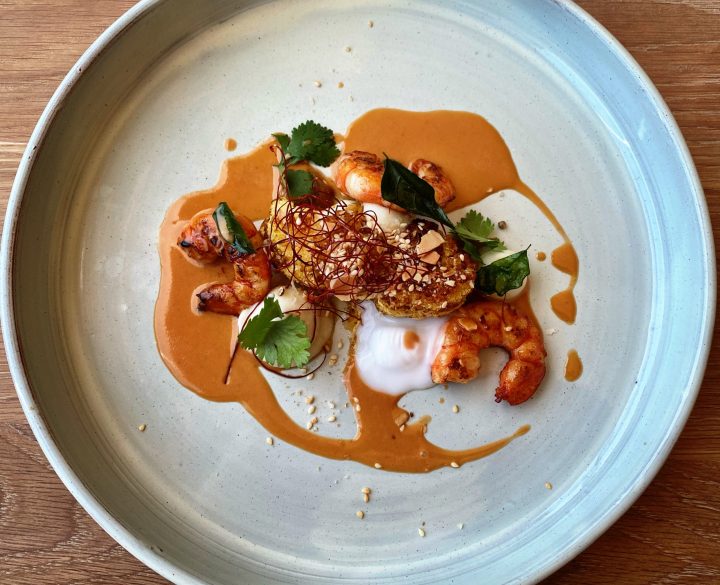
Peter Tempelhoff is rounding off a turbulent year in the restaurant business with a new partnership with Buitenverwachting in Constantia, where he has opened beyond, which references the translation of the wine farm’s name: ‘beyond expectation’.
Funny story: once upon a time, two men walked into a stationery shop… this is perhaps not the joke you were expecting but truth is stranger than fiction. It was a chance meeting in Waltons – yes, the stationery shop – between chef and restaurateur Peter Tempelhoff and Lars Maack, owner of Buitenverwachting, that has resulted in the opening of beyond at the end of November 2020.
That was in August 2020, around the time I interviewed Tempelhoff at his renowned city centre restaurant FYN following a spectacular Japanese-inspired multiple course luncheon. On that day, he said: “If you’ve got the propensity to do it and you’ve got the inner strength to invest… this is a really good time to start looking for opportunities.”
When we sat down together again in the first week of December 2020, when beyond was only a week old, Tempelhoff said he had had no idea then how true that statement would be for him, citing concern that launching a new restaurant in the current climate could be a financial disaster. It might still be.
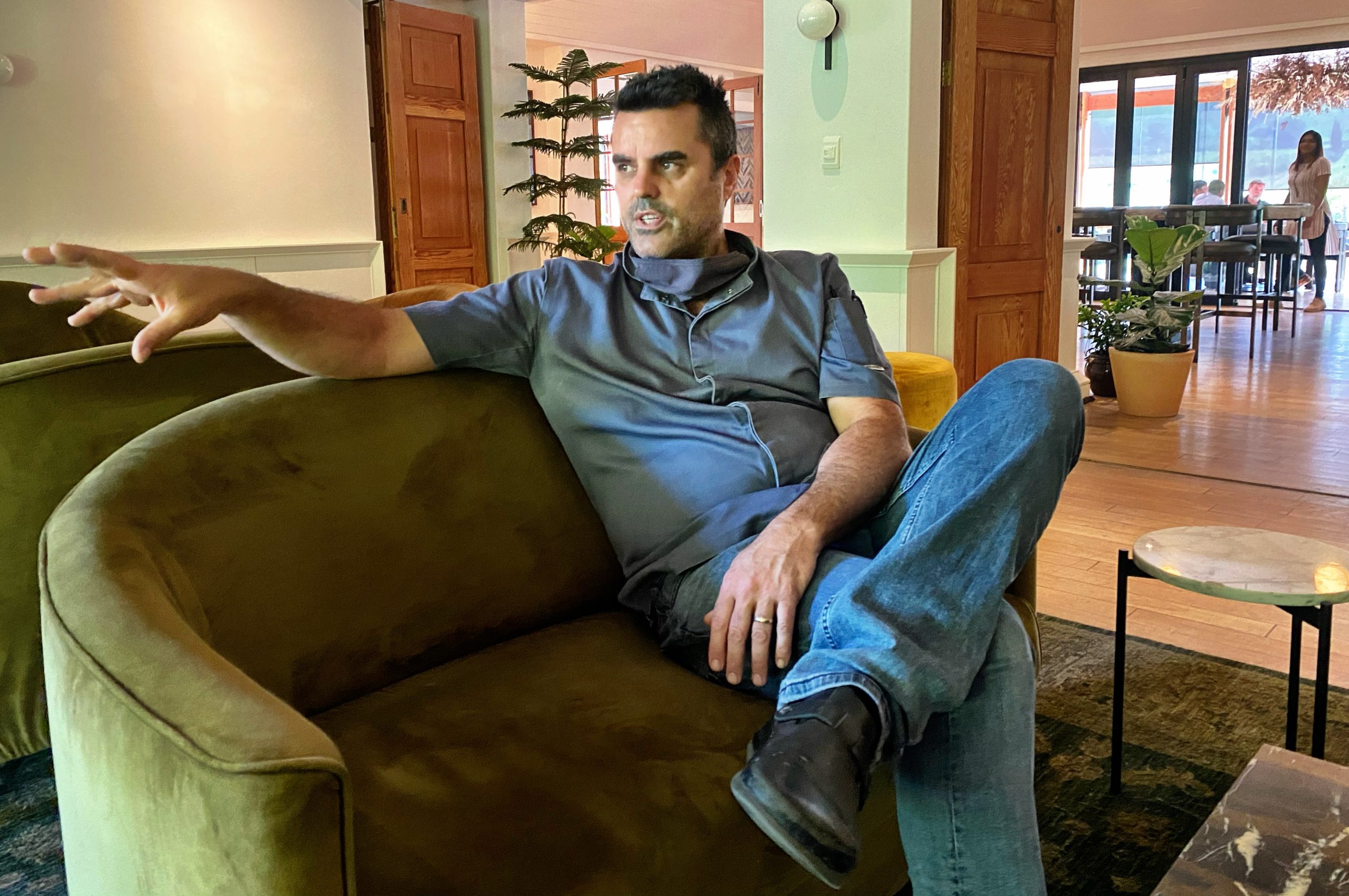
‘The Sunday braai will be out there in the courtyard,’ is what Peter Tempelhoff is saying here. (Photo: Bianca Coleman)
Tempelhoff had heard Scot Kirton from La Colombe had been looking at the space on Buitenverwachting, vacated by Edgar Osojnik and his team in April 2020 when it closed during lockdown. There, between the pens and paper at Waltons, Maack popped the question: “Yes, I’m looking for a tenant… why? Are you keen?” Tempelhoff replied: “Yeah, I’d be keen to have a chat.” They shook hands or bumped elbows or did finger guns and agreed to have a meeting.
Initially there was some talk about taking over Coffee Bloc as well, the farm’s casual breakfast and lunch venue, with its small deli and roastery.
Said Maack: “Scot came here and he wanted everything from wine tasting to platters to Coffee Bloc and I said I might as well give you the keys to the farm. It was too much!
“Then we looked at the restaurant in isolation but I wanted it more integrated with the farm and he wanted to be less integrated, so that was an obstacle. With Peter we found the middle ground.”
Tempelhoff admits he was relieved to take only the restaurant; consultation with the staff who have years of service revealed they wanted things to stay as they were, so it was a win-win all round.
This integration is reflected in the name, beyond. “Lars wanted the restaurant to be brought more into the farm, so it’s fitting. And it tells a story about the ingredients and how we go ‘beyond’ to get them,” said Tempelhoff, whose credentials include Greenhouse at Cellars-Hohenort and Mondiall at V&A Waterfront, as well as FYN. He has a solid reputation.
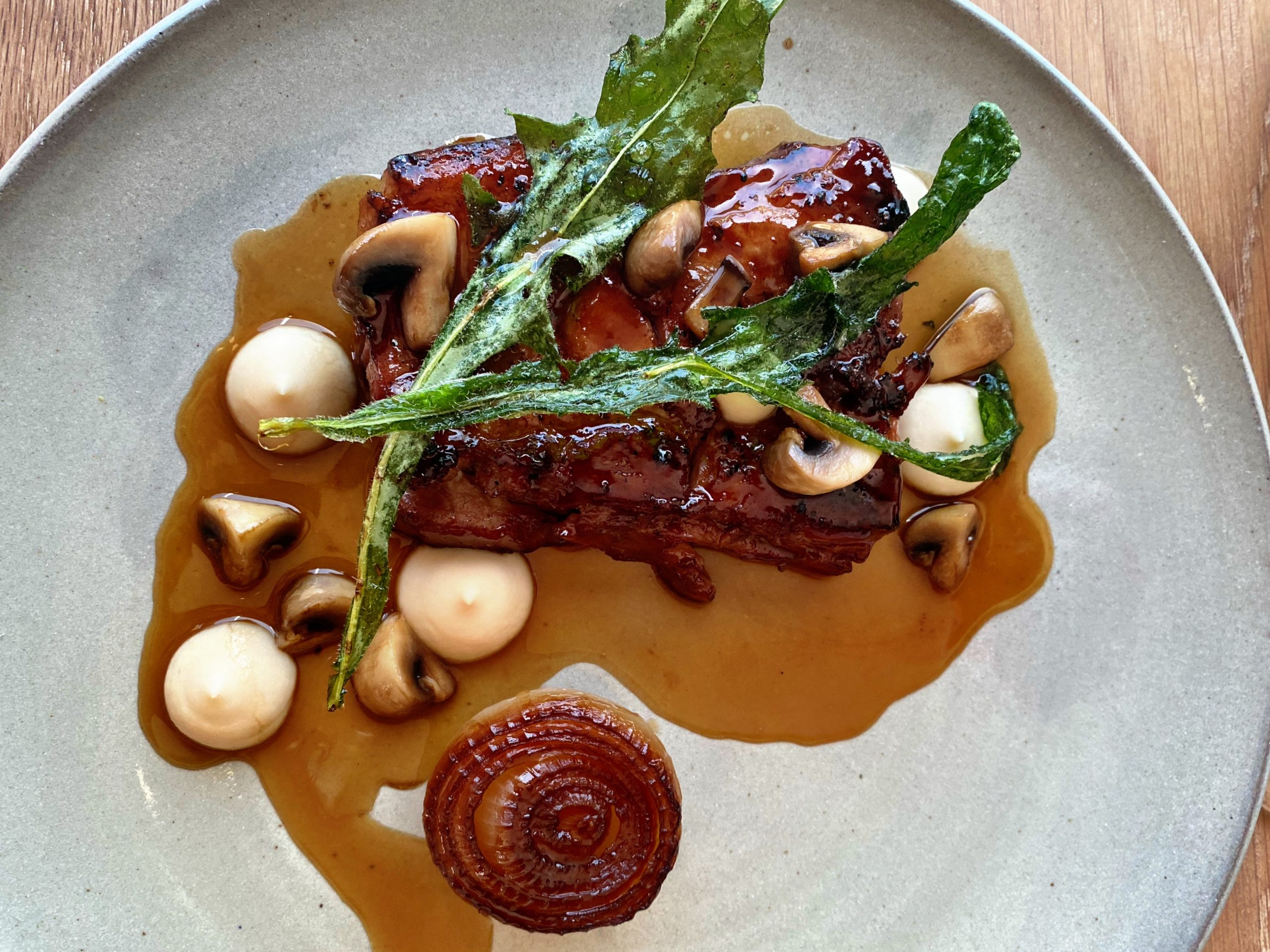
Local Iberico pork – the shoulder cut is used, tender and moist with a lovely bit of fat. (Photo: Bianca Coleman)
“Maybe so,” he allowed, “but you can’t rely on that. It’s a work in progress, and we have to work it hard with social media and marketing. We want people to come in and enjoy it for what it is – a great location, food that is quite simple, by my standards – and it’s well priced.”
In little more than two months, the interior had been pulled together by Tristan du Plessis and Christof Karl, the same team responsible for the striking ceiling feature at FYN, based on the design of an abacus. “Luckily no structural work had to be done; we sanded the floor on our hands and knees because we couldn’t afford those fancy machines. Then two coats of sealant and that was it,” said Tempelhoff.
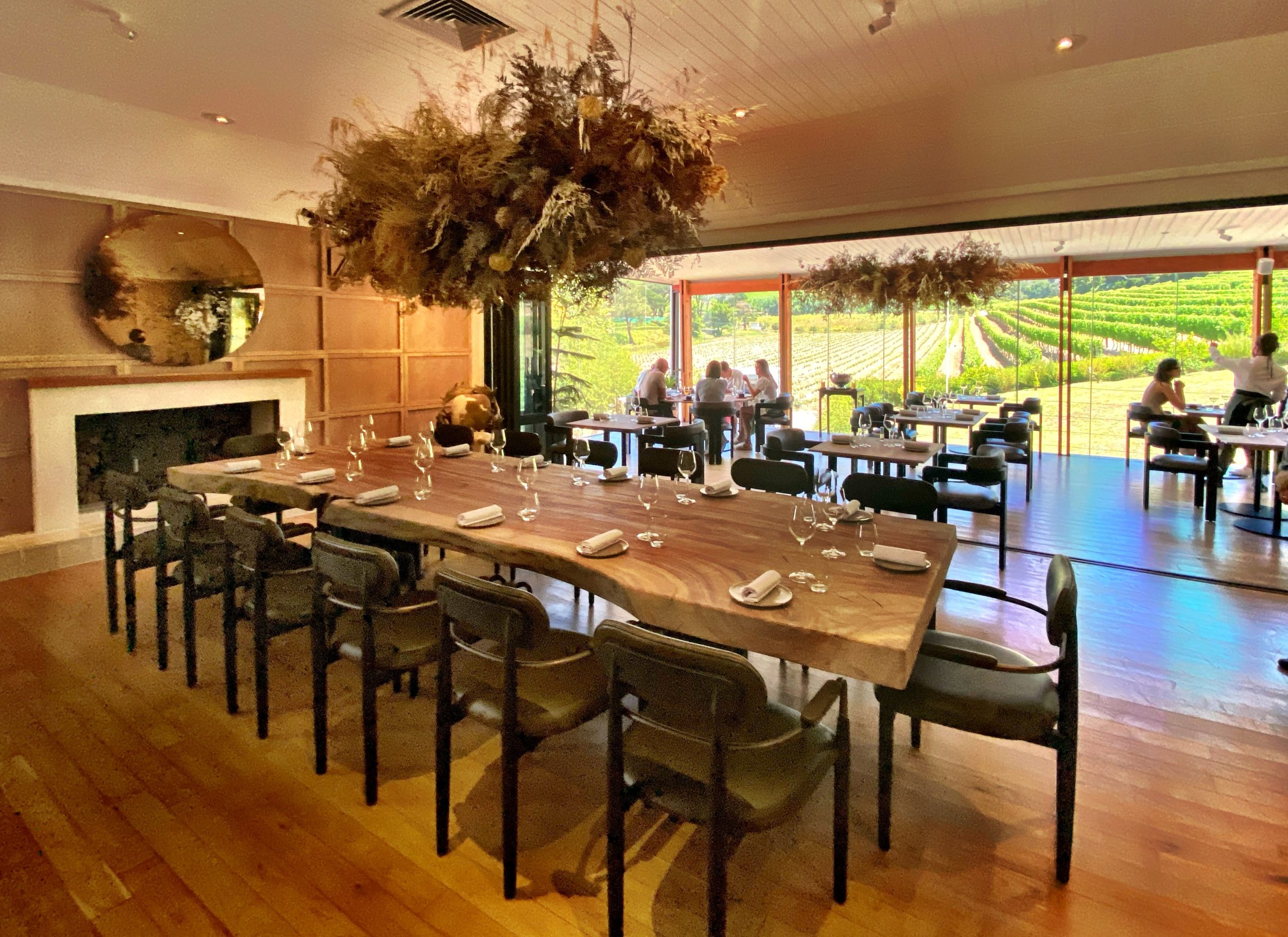
Elegant and a cool view. (Photo: Bianca Coleman)
The restaurant needed to open with a concept and an identity, said Tempelhoff, and that was, in a word, ingredients. “That’s how I remember restaurants – sourcing the best ingredients, and keeping it simple. This has taken me back to when I walked into Marco Pierre White’s restaurant and through the doors into the kitchen London 1997, no 1999, and we started cooking à la carte with the best ingredients. The dishes were super simple, like foie gras terrine with a blob of onion marmalade and that was it. It’s kind of what we wanted to create here – get the best ingredients, and support hyper local suppliers who really need it.
“It’s pertinent not to be importing right now.”
As fast as the interior had been whipped into shape, so too was the menu. The first time dishes were cooked was when the kitchen was ready, a week before opening. “We knew the dishes we wanted to put together and it wasn’t as hard as it was with FYN,” said Tempelhoff, where he had to immerse himself in Japanese cooking. “Dashi, soy, seaweed…such an alluring smell; I love walking into FYN. But I also love doing Italian, and there’s a hint of that here, a bit of French…kind of going back to basics like when I first started cooking. I love this kind of food as much as I love Japanese. There’s nothing worse than being stagnant and doing the same thing year after year.”
Julia du Toit is head chef at beyond, and the menu is a clever combination of exquisite presentation, delicately balanced flavours, and all the glamour of fine dining but the easy accessibility of an unintimidating meal.
“I enjoy fine dining to a point but because it’s a farm I like to have a rustic appeal and I think that’s what we need,” said Maack, who took over the running of Buitenverwachting in 1990. His family bought it in 1980 and lived there from 1983. Maack returned to Germany to finish his schooling and later, his parents moved back as well. There came a time when Maack’s father looked at the farm and decided either he, Lars, would have to apply the business skills he had studied and transform it into a profitable concern, or he was going to sell it.
“When my parents bought the farm it was completely run down – no farming activity and no business. Then they rebuilt everything so I had a good base to work with; the infrastructure was in place, and they planted vineyards,” said Maack. “My problem was I had no clue about wine; Hamburg is beer country. Today I still believe that not having any knowledge about wine really helped us.”
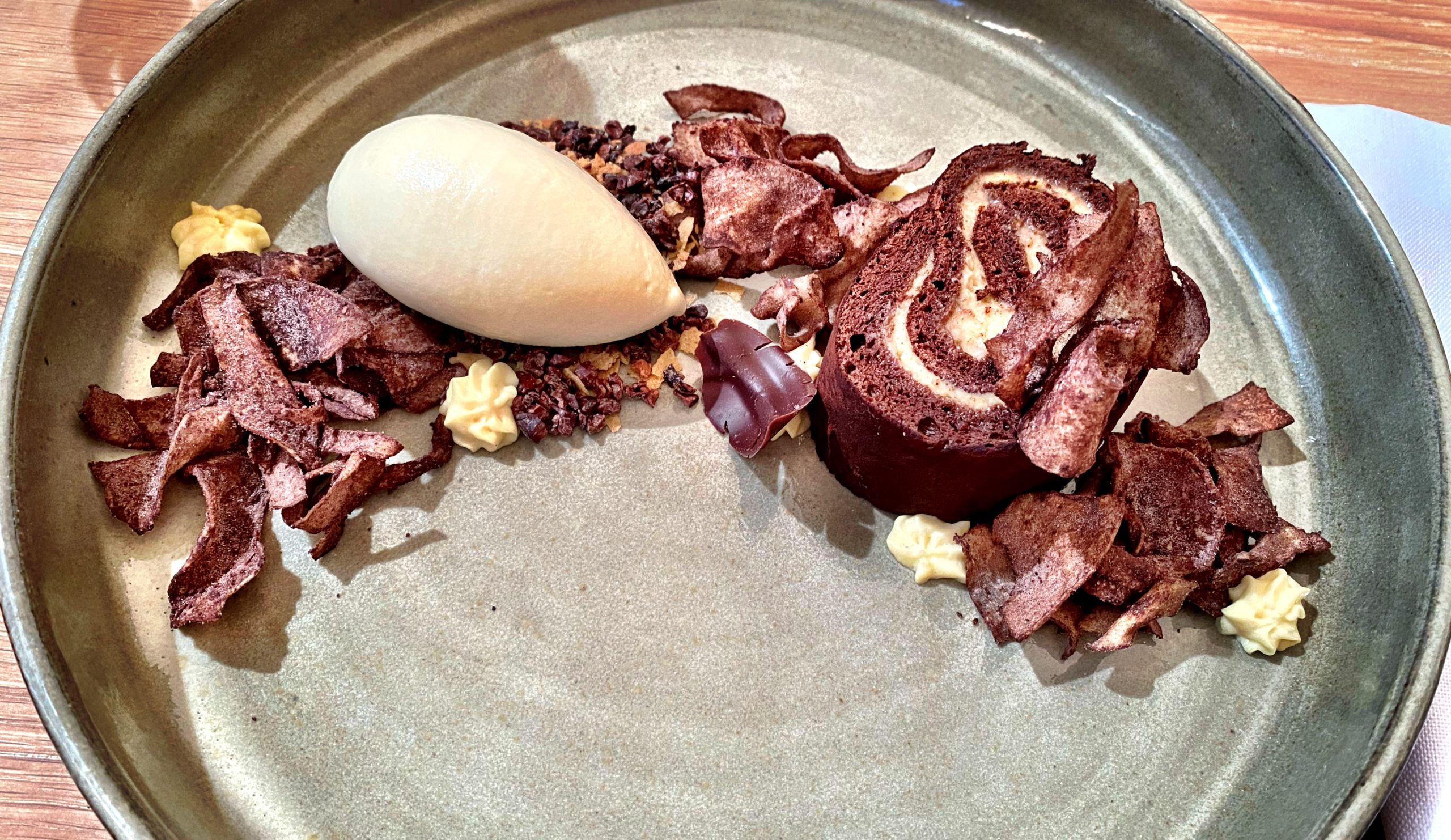
Parsnips for dessert, anyone? True story. (Photo: Bianca Coleman)
During the 80s and apartheid, the market was closed and there was no interaction with international winemakers. “I did two to three blind tastings a week and because I didn’t understand wine, I wanted something which was pleasing and fruity,” said Maack. “Everything they rated highly, I didn’t like and everything I liked, they hated. Then I realised I represent the man in the street – the consumer. They were going for whites which were amazing but complicated to drink. I asked the winemaker at the time, Jean Daneel, ‘can’t we make a wine that is charming and has the fruit and everything else but at the same time offers all your quality markers like stricture and so on?’. And that’s how Buiten Blanc was developed. That was the wine that saved us and the future of the farm, and became in a way our icon wine.”
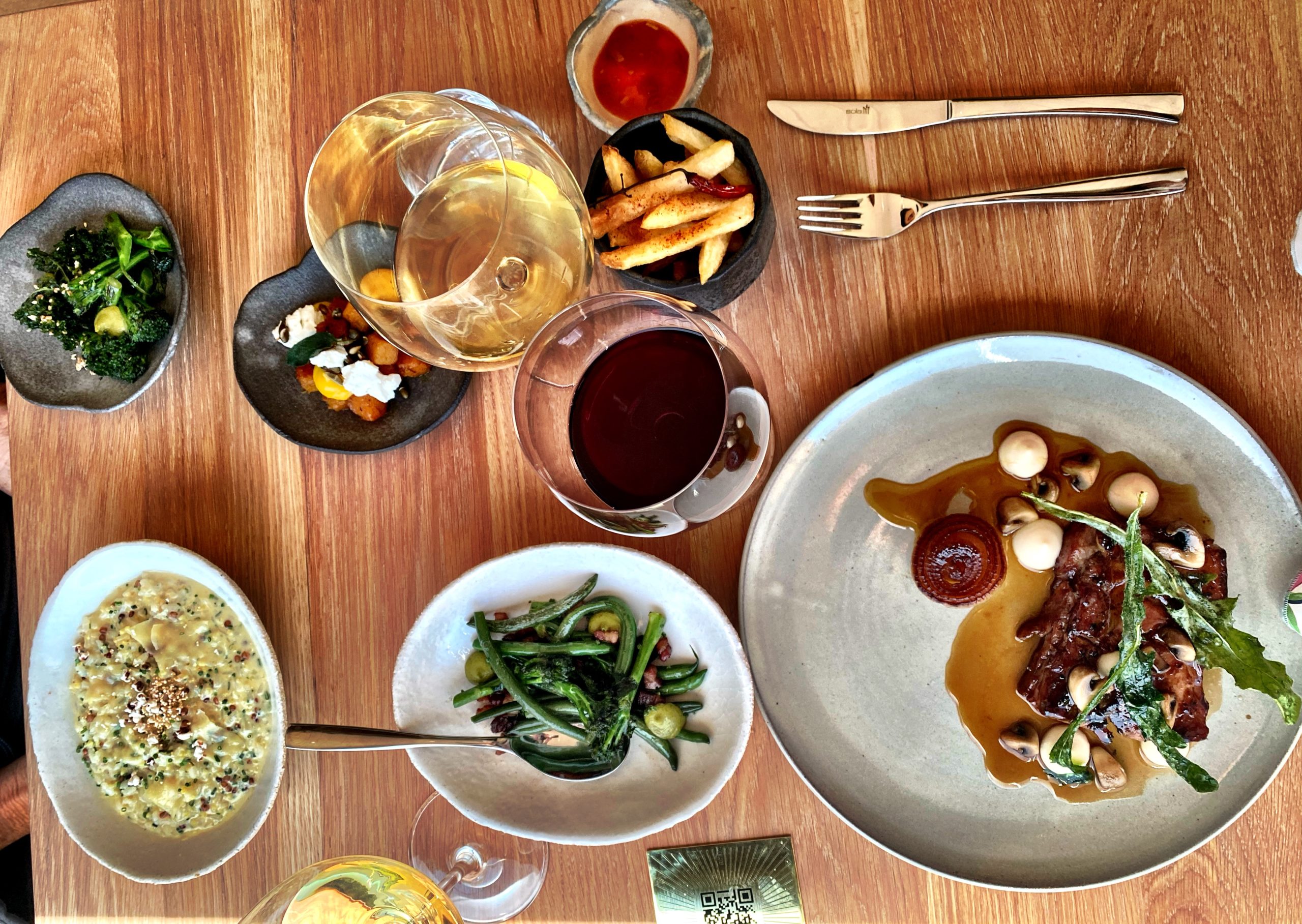
Main courses with a choice of sides. (Photo: Bianca Coleman)
In the 1980s there was one wine producer in the valley and that was Groot Constantia. Klein Constantia and Buitenverwachting came on board at the same time, but it was still a remote area that no one really wanted to visit for a paltry three wine farms. To attract visitors – and also because Maack’s parents were too lazy to drive to town – they decided to open their own restaurant. The first chef to take up residence was Etienne Bonthuys in 1983. “He leased the premises, an old building which there was little to do to adapt it. He was very successful,” said Maack.
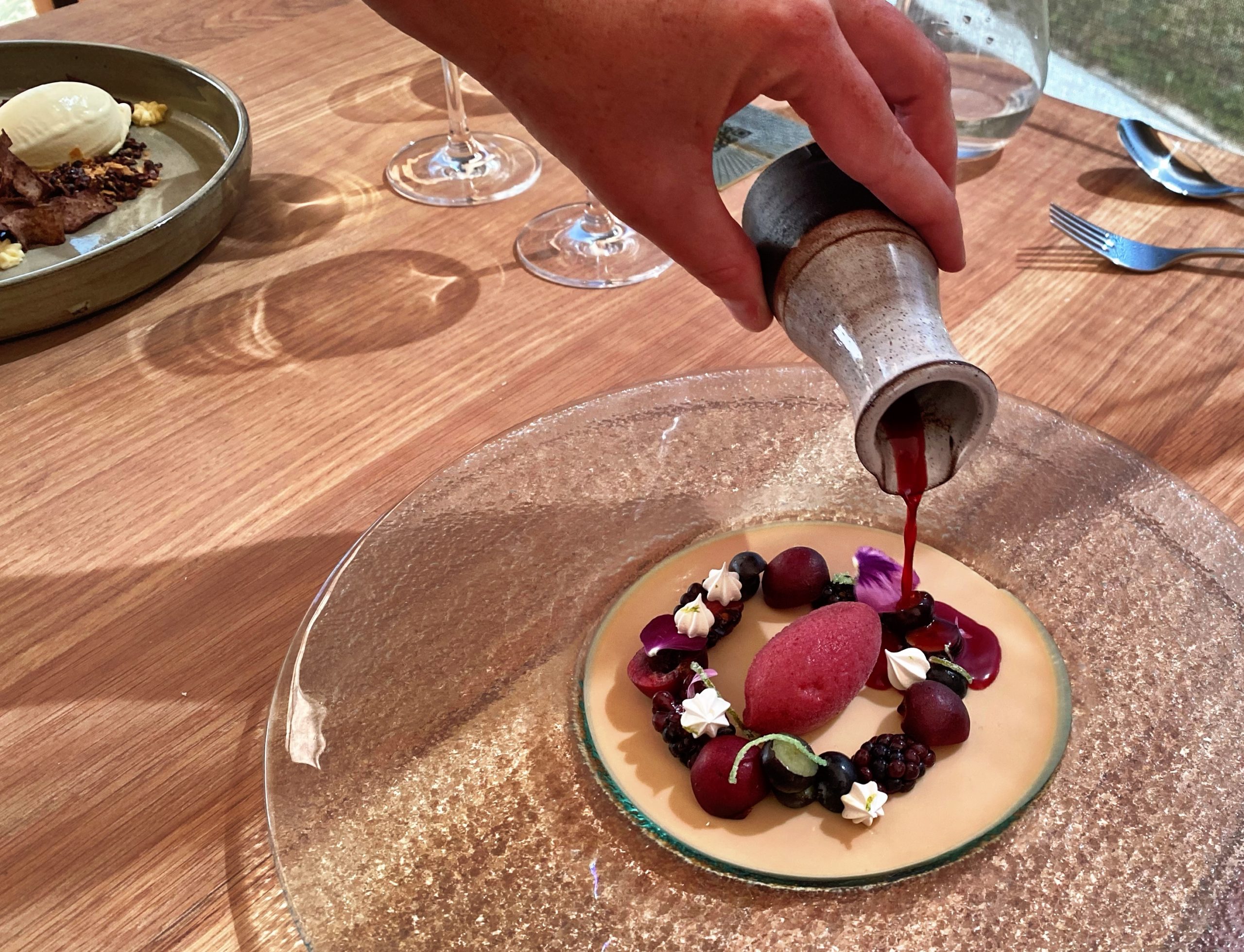
A dessert of dark berries and namelaka. (Photo: Bianca Coleman)
Two years later it all burned down, to the ground, an electrical fault. “My parents’ friend who was an architect said ‘fantastic, that’s good news – now we can build the space how we need it and not adapt the restaurant to the space we had’.”
The rebuild took about two years and reopened under Austrian chef Thomas Sinn, who remained for 10 years before leaving to open his own restaurant, Blue Danube, in Tamboerskloof. The restaurant’s longest standing chef, Osojnik was there for 20 years…and then came Covid-19.
“It was too much for the farm to carry,” said Maack. “We looked at options and gave the staff a choice: you can either have severance pay, or use the money for the concept we have developed. But once that’s gone, it’s gone. There’s no more. They all decided to take the money and not the risk.
“It was the right decision. Even now, going into a new season, many restaurants are not running at full capacity. I was in no rush to open up, and offered it to Peter as a pop up to test it. He had half a cup of coffee and said ‘no, let’s do it properly’, which I thought was a very brave move.”
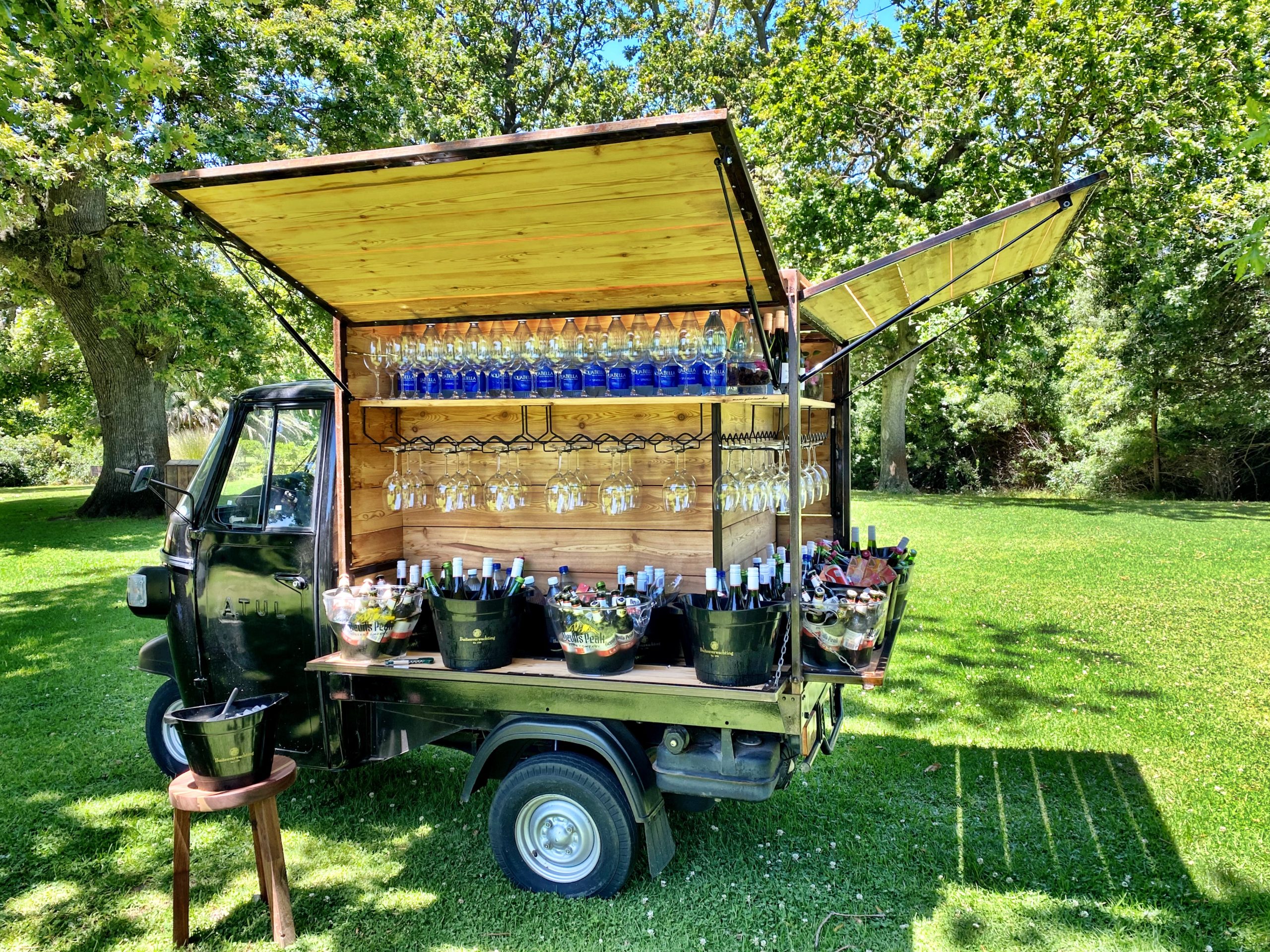
Buitenverwachting has everyone’s dream vehicle: a wine truck. It’s in service at the farm and can be hired for private functions too. (Photo: Bianca Coleman)
Above and beyond beyond (sorry not sorry), there’s the wine tasting room and Coffee Bloc, and a huge lawn between them to accommodate a significant number of visitors. “We’ve got one tuk-tuk running as a bar, just to spread people out, another one that’s a braai,” said Maack. These are like little mini food trucks, and create a market atmosphere selling ice cold wine and beer, and sausages in rolls – South African or German style. Umbrellas are dotted around the lawn to encourage appropriate distances. “Otherwise they bunch up in the shade of the trees,” noted Maack. “Every hour, in peak times, I film the lawn, and calculate numbers. If it’s getting close to the limit then we shut the farm and only as they leave can others come in, which is monitored at the front gate.”
beyond is open for lunch and dinner Tuesdays to Sundays for à la carte, and on Sundays from after Christmas, there will be Sunday braais in the courtyard, weather permitting. The rest of the farm is open Mondays to Saturdays so this will round out a full week of activities. DM/TGIFood
For more information, click here.




 Become an Insider
Become an Insider
Comments - Please login in order to comment.